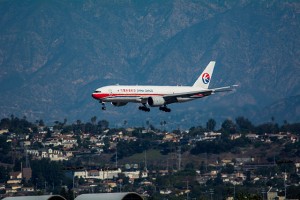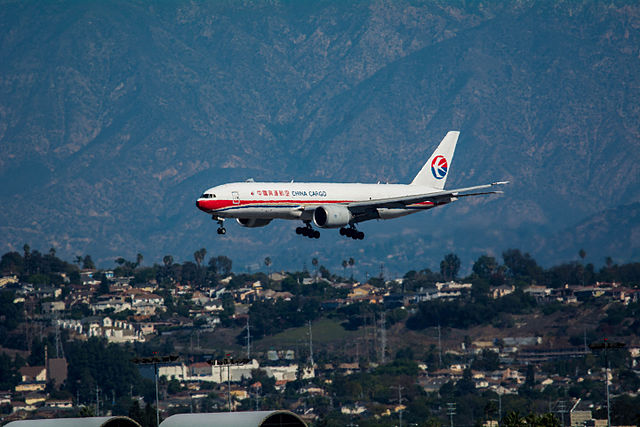 Airfreight volumes lifted by Asia-Pacific carriers posted moderate growth for the whole of 2015 as regional airlines appeared to have recovered a little by end of 2015 from the slowdown in trade mid-year, said the International Air Transport Association (IATA).
Airfreight volumes lifted by Asia-Pacific carriers posted moderate growth for the whole of 2015 as regional airlines appeared to have recovered a little by end of 2015 from the slowdown in trade mid-year, said the International Air Transport Association (IATA).
IATA’s newly released figures show that 2015 was a highly challenging year for global air cargo, with volumes measured in freight tonne kilometers (FTKs) expanding 2.2% in 2015 compared to 2014. This is lower than the growth of 5% recorded in 2014 as trade growth slowed in Europe and Asia-Pacific.
“After a strong start, airfreight volumes began a decline that continued through most of 2015, until some improvements to world trade drove a modest pick-up late in the year,” said the association.
Cargo in Asia-Pacific, accounting for around 39% of freight traffic, expanded by a moderate 2.3% in 2015 year-on-year. The key markets of Europe and North America, which between them comprise around 43% of total cargo traffic, were basically flat. Latin America suffered a steep decline (-6%), while the Middle East grew strongly, up 11.3%. Africa also saw modest growth of 1.2%.
The freight load factor (FLF) was at times the lowest for some years, falling to an average 44.1% compared to 45.7% in 2014, driven down by weak demand and capacity expansion.
Not surprisingly, Tony Tyler, IATA’s director general and CEO, does not have bright words for this year: “2015 was another very difficult year for air cargo. Growth has slowed and revenue is falling. In 2011 air cargo revenue peaked at $67 billion. In 2016 we are not expecting revenue to exceed $51 billion. Efficiency gains are critical as the sector adjusts to shortening global supply chains and evermore competitive market conditions. We have to adjust to the ‘new normal’ of cargo growing in line with general rates of economic expansion.”
On the global freight growth rate in December, this reached 0.8% compared to December 2014, with considerable regional fluctuations.
As for regional performance for December and full-year 2015, Asia-Pacific carriers were basically flat in December, expanding just 0.1%. For the whole of 2015, the region grew 2.3%. The FLF for 2015 was 53.9%, the highest of any region.
“Cargo expansion in the region has been hampered by a shift in Chinese economic policy to favour domestic consumption. A mid-year fall of 8% in trade to/from emerging Asia also led to declines but this appears to have bottomed out, with a rebound in the second half of the year,” noted the report.
European airlines grew by 1.2% in December, but the performance for 2015 in total was a fall of 0.1% compared to 2014. The FLF in 2015 was 44.9%. Economic conditions in the Eurozone have been subdued, leading to suppressed demand for airfreight, but imports have improved in recent months.
North American airlines saw FTKs expand 1.4% in December compared to December 2014. For the whole year, North America grew just 0.1%. The 2015 FLF was 34.3%. Growth in 2015 faded after a strong start that was flattered by the West Coast ports strike. Recently there have been mixed signals from economic data, indicating an uncertain outlook for airfreight in the coming months.
Middle Eastern carriers grew 4% in December, and for 2015 in total the region expanded 11.3% compared to 2014. The FLF was 42.8% for 2015. The region enjoyed a strong year as network expansion into emerging markets was supported by economic growth in local economies. Political instability and the fall in the oil price may impact on some economies in the region, but growth as a whole remains robust enough to support further expansion in 2016.
African airlines’ FTKs declined by 8.4% in December, although for 2015 as a whole the region grew by 1.2%. The FLF in 2015 was 29.7%, the lowest of any region. The underperformance of the Nigerian and South African economies was a challenge throughout the year, but trade growth to and from the region was sufficient to drive a modest expansion in FTKs.
Latin American carriers continued the weak performance of recent months, declining by 6.2% in December and by 6% for 2015 as a whole. This was the weakest performance of any region. The average FLF for 2015 was 38.3%. Economic and political conditions in Brazil have worsened, and regional trade activity has been volatile.
Photo by Glenn Beltz from Goleta, USA





